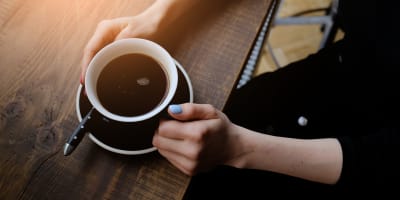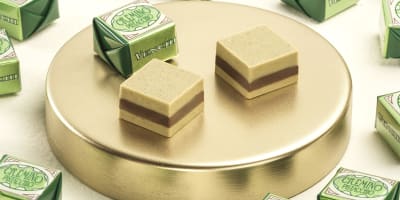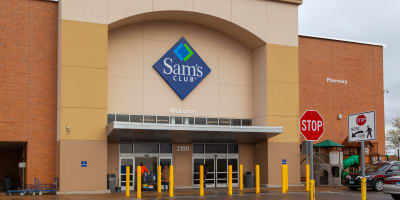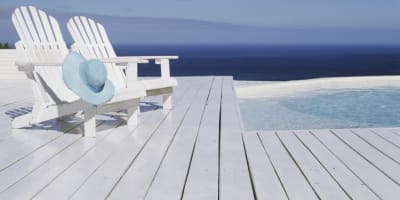Can a $150 million makeover revive this Miami mall? Shopping is just a part of it
Shopping malls are changing in South Florida. They’re no longer just corridors with store after store. They’re becoming town squares, with fitness centers, residential towers, arcades and amusement centers — alongside the traditional retail.
A Northeast Miami-Dade mall, with roots over six decades, is the latest to join the trend in moving from shopping center to lifestyle center. It’s been years since the Mall at 163rd Street has been considered a shopping destination. Competition — both brick-and-mortar and online — and consumer buying habits have changed. And so has the mall.
But now, new owners are planning a $150 million makeover that would turn the moribund mall into apartments, amusement areas and new shops.
Five real estate investment and development firms acquired the 24-acre Mall at 163rd Street at 1205 NE 163rd St., according to co-owner Mickey Taillard, founder of the Hollywood-based real estate acquisition and redevelopment Taillard Capital.
What are the plans? Retailtainment.
That’s the industry buzzword for a mix of traditional retail like department stores and specialty shops and restaurants, along with venues that draw customers, often younger, to play. Some owners use words like “lifestyle” or “experiential.” Think: arcade games, mega fitness centers, bowling alleys, theme parks, water slides and ski slopes.
“We love the location,” Taillard said. “The mall underserves the location. This area deserves new owners and operators to come in, fix it, spruce it up and bring in new tenants. It used to be the place to be. We want to come and bring it back to what it used to be — a central part of that North Miami Beach area.”
The location is a few miles south of upscale Aventura and its destination mall, and in between the beach to the east and the Golden Glades to the west.
The mall deal and future renovations
The sale deal closed last week for $46 million. The partners plan on renovating the shopping center and bringing in experiential retail, medical services, and reviving the food court. The goal: Make it a destination.
Renovations should take two years, said co-owner Yaniv Sananes, founder of YS 26 Capital, one of the other new investors in The Mall. The changes will keep part of the mall enclosed while returning some portions to open-air.
After the changes, the owners want to bring in new stores and services, including potentially a pickleball court, padel tennis (a game of Mexican origin that is like squash), and doctor’s offices. After renovations are done and new retailers arrive, Taillard said the partners are contemplating developing part of the site into a mixed-used development with retail on the bottom and apartments for rent or condominiums on top.
Some of these modern updates that Taillard speaks about — the sports additions and the medical practices, as well as open-air portions — are nods to the original North Miami-Dade mall’s roots.
Return to roots in modern fashion
When The 163rd Street Shopping Center — as it was called until a major renovation in 1982 that enclosed the complex — opened in November 1956, it was an open-air shopping plaza. Owners lured customers by offering toddlers and elementary schoolchildren something fun to do while their parents took a break from shopping at one of the department stores like Burdines and JCPenney.
The 163rd Street Shopping Center boasted a mini-amusement park area back then with a choo-choo train and a county fair-like ride with helicopter-shaped cars. The mall also had a go-kart track in the north parking lot until Hurricane Cleo destroyed it in 1964.
MORE: What did your Miami mall once look like? A trip back to the old Dadeland, Omni, others
The shopping center’s opening tenant list in 1956 included names now mostly forgotten: Arcade Barber Shop, Arnold’s Kiddyland, Chandler’s Shoes, Food Fair Supermarket, Grable’s Bakery, Harmony Music Shop, The Home Mart, Junior Town, Mangel’s Department Store, Schiff Shoe Store, Woolworth.
The original tenants also had storefronts for medical services, like an optometrist office, not unlike the mix the mall’s new owners plan for the $150 million makeover.
By the 1960s, in keeping with the peace, love and psychedelic area music of the period, the outdoor 163rd Street Shopping Center mirrored hippy hangout Coconut Grove neighborhoods that were about 20 miles to the south. The Treasure Chest sold incense, black light posters and other trippy knick-knacks — like Dadeland Mall’s The Barefoot Mailman.
To fulfill the “entertainment” quotient, a Wometco 163rd Street Theatre was tucked toward the mall’s rear and in 1961 was doubled and renamed the 163rd Street & Patio Theater. Its movie marquee faced the main street and served as a sign that you have arrived at the mall.
In February 1971, Jordan Marsh department store opened a three-story location at the shopping center’s east wing to compete with Burdines.
By 1982, the mall was enclosed, with metal arches and a Teflon-coated translucent material serving as a dome.
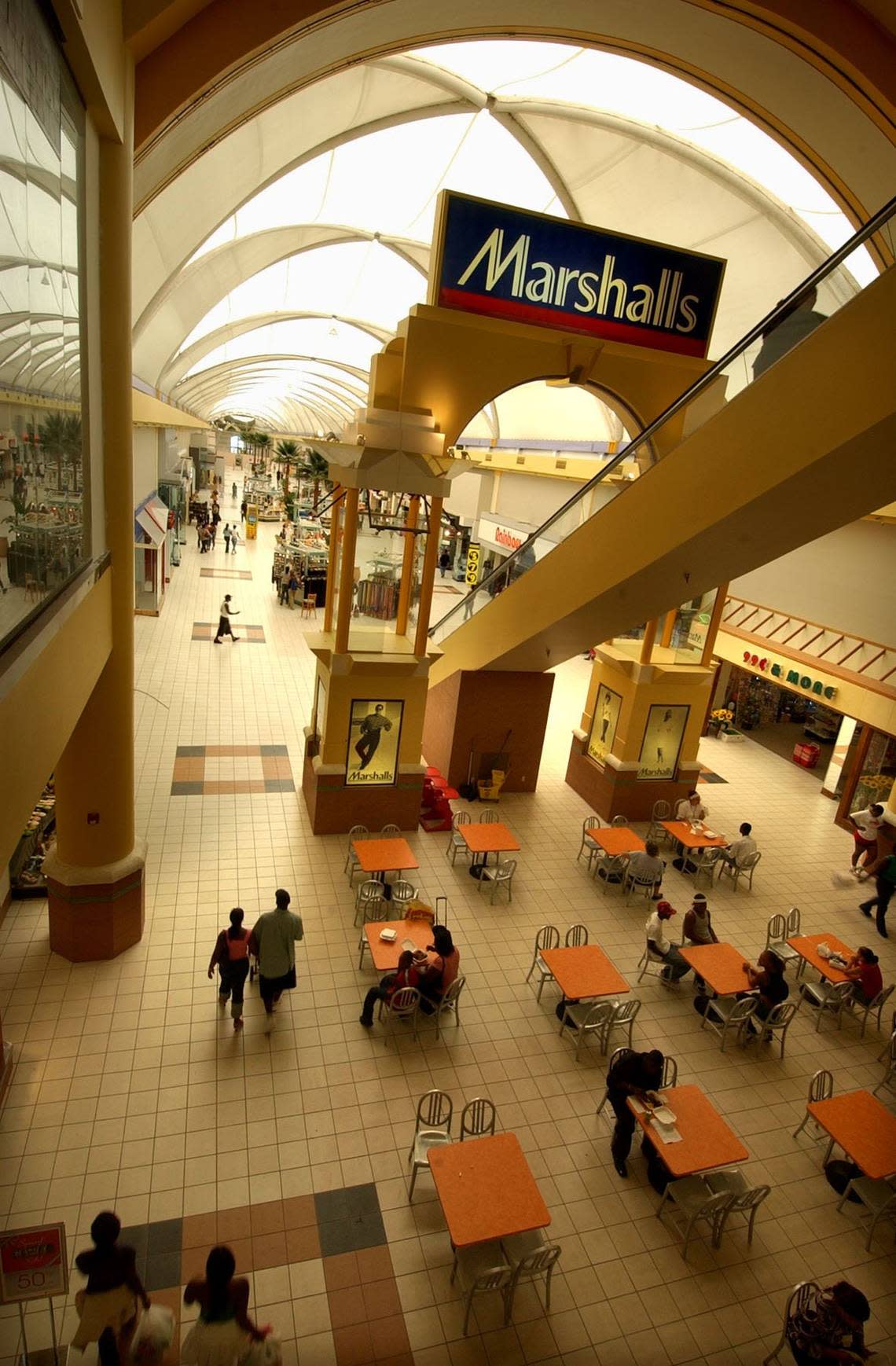
Around that time, the 163rd Street mall was unofficially rebranded as The Miracle on 163rd in an effort to draw attention to a $39.7 million makeover for the 1.2 million square-foot center. The plan, then, was to design space for 145 stores and provide parking for 4,700 cars, according to a 1982 Miami Herald report.
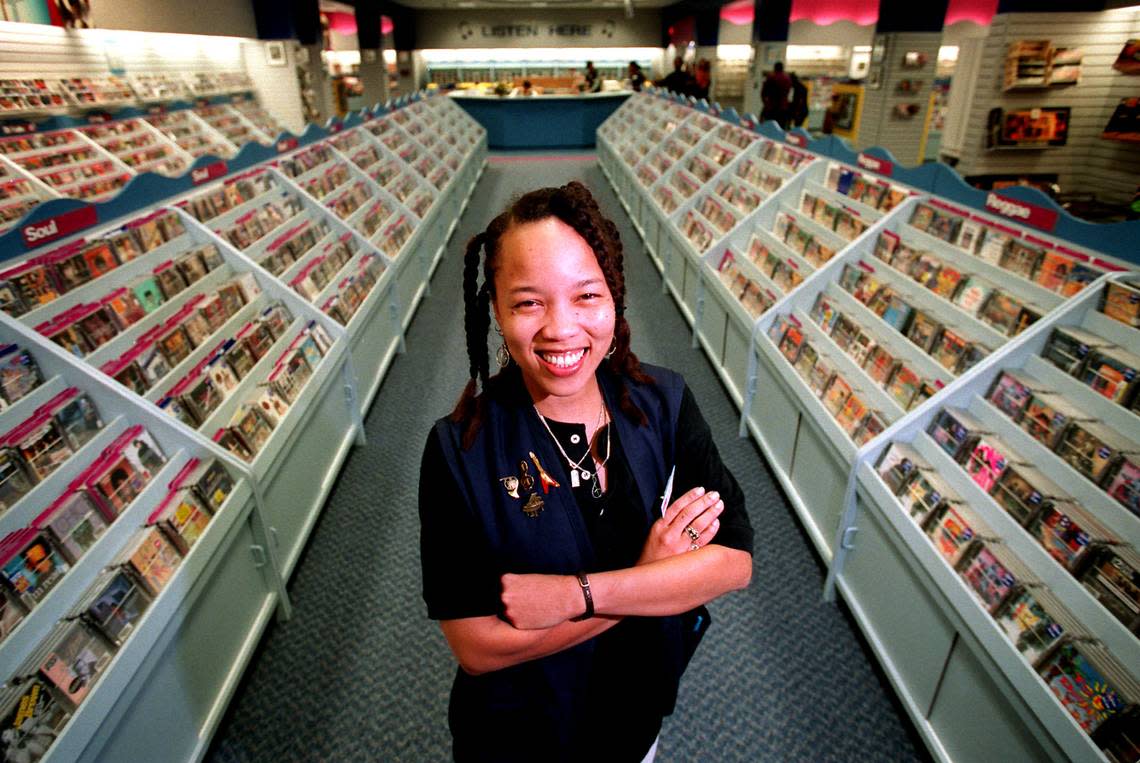
The mall’s decline
But then them major department stores started to leave. So the mall owners took the opportunity to redesign the voids.
When Richards department store departed in 1980, the space became a three-story atrium and second-story food court. Aventura Mall snagged JCPenney when that mega mall opened in 1983 a few miles north on Biscayne Boulevard. So the 163rd Street Penney’s space was carved into smaller specialty stores.
But the departure of Jordan Marsh in 1991 and Burdines’ relocation to Aventura Mall in 1999 meant the miracle was not to last. The arrival of a Walmart Supercenter in the mid-2000s wasn’t a miracle cure.
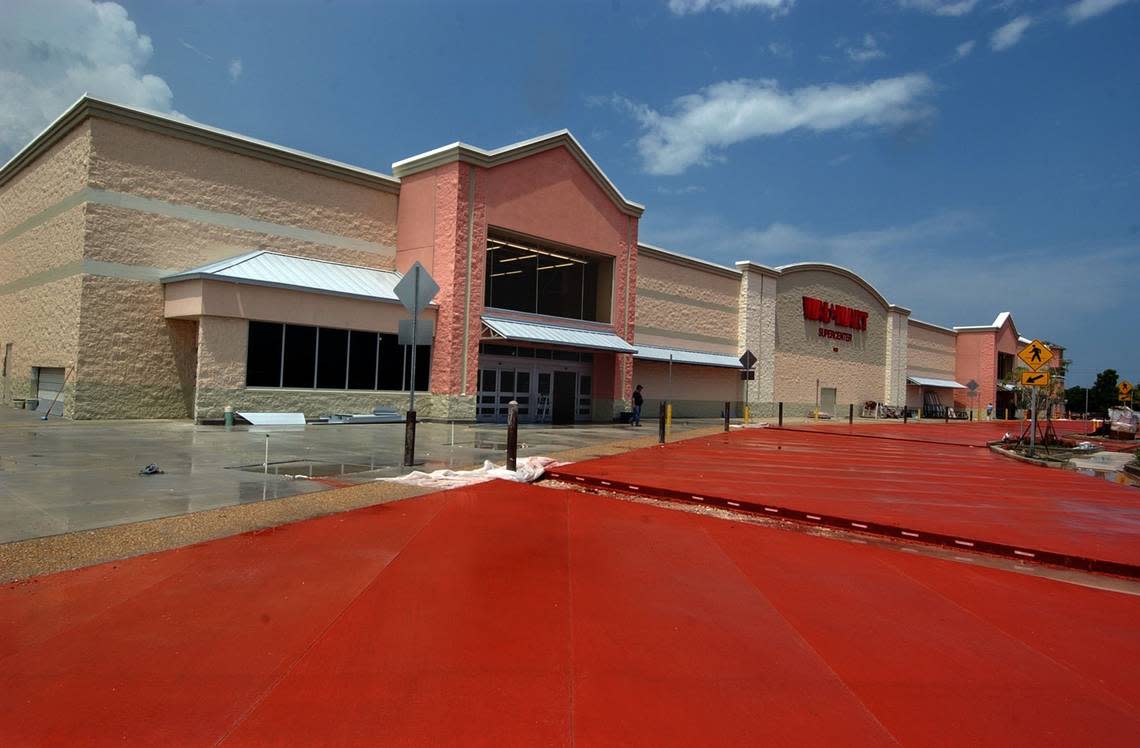
Fitting into current trends
The new owners’ plans for The Mall at 163rd Street puts the old shopping destination in line with current trends. The mall joins venues like The Falls in the Kendall area, which last year added the three-story country club-like Life Time gym and an Arcade Time Entertainment center to its roster of stores and restaurants.
A team of Canadian developers are still hoping to build the biggest mall in America when — if — it finally opens its long-gestating $4 billion American Dream Miami mega-mall on undeveloped land on 175 acres of undeveloped land in Northwest Miami-Dade where Interstate 75 meets Florida’s Turnpike. The dream is to include an artificial ski slope, offer submarine rides and an amusement theme park, water park, performing arts complex along with shops and restaurants and three hotels.
MORE: Are we getting a ginormous mall with a ski slope? What to know about American Dream Miami
Almost as ambitious: The moribund Southland Mall in Cutler Bay stands poised to evolve into the 98-acre, $1 billion Southplace City Center over a seven-year period. The 98-acre Southplace City Center is expected to offer about 4,500 new residential units, a town square green space area with bike, walking and golf cart trails, a hotel, a terraced community amphitheater and bandshell. Presidente Supermarket signed into the $1 billion development earlier in March.
MORE: Presidente Supermarket coming to the $1 billion development replacing Southland Mall
Miami International Mall recently signed Elev8 Fun to a lease to fill 110,000 square feet of the 42-year-old Doral mall with more than 100 arcade games, 12 bowling lanes, a go-kart track, mini-golf, a fitness center and a full-service restaurant.
Then there is the 93-foot glass and steel “Aventura Slide Tower” designed by German sculptor Carsten Höller that opened at Aventura Mall in 2019. Vivo!, a 62,000 square foot entertainment complex at The Dolphin Mall.
And Palms at Town & Country is another example of shopping center becoming lifestyle center. Recently, the open-air complex added a new EōS Fitness gym to pump life into the less flashy side of the mall, which has an older Publix, a post office, UPS Store and a Marshalls/HomeGoods as anchors. In August, The Real Deal reported that Kimco Realty, which owns and manages Palms, plans to redevelop a portion of the sprawling complex by building a pair of 12-story apartment buildings with 630 units and retail on the site of a Kohl’s building on the property.
MORE: Two popular Kendall malls are making big changes. What they’re doing to lure customers
Can the mall be revitalized?
The Mall at 163rd Street was the king of shopping in the area — until the Aventura Mall came to town in 1983. Just three miles to the north, Aventura has become one of the largest and fanciest shopping and entertainment complexes in the country, with a food hall, high-end restaurants, a multi-plex movie theater and one luxury shop after another.
But the king could have trouble reclaiming its crown.
The partners have yet to land all of the $150 million budget they’ll need to renovate the mall. But Taillard said he’s positive they’ll be able to find a lender given the location, project plans and existing tenants. Taillard Capital acquired the 24-acre 163rd Street mall site alongside Ark Ventures, YS 26 Capital, Strategic Capital Alliance and Tuesday Properties, a division of the investment firm EquiShares.
Beth Azor, founder of the Weston-based commercial real estate investment and brokerage firm Azor Advisory Services, said trying to revitalize The Mall at 163rd Street with renovations and new tenants will be an uphill battle given the competition from so many malls. With about 20 malls across Miami-Dade, Broward and Palm Beach, South Florida “overbuilt malls,” she said.
“It’s going to be a challenge. It wouldn’t surprise me if they tried, can’t do it, and rezone it” to include housing, Azor said.
“I see the future of that being more likely. Malls around the country that are in demographics that are not in high-income areas are challenged,” she said. “Luxury retail — the stores that are doing well in malls — want to go into high-income neighborhoods. Malls like 163rd are not in high-income areas.”
Surrounding North Miami Beach is known for its budget-friendly yet aging housing supply, including for rentals and condos. According to the U.S. Census Bureau, the median household income for the area is $58,263 per year, lower than the median household income of $73,587 per year surrounding Bal Harbour Shops, one of the poshest malls in South Florida.
While some malls are thriving with high occupancy rates at places like Aventura Mall and foot traffic coming in from across the region, country, and the world, many face uncertain futures, including Miami International Mall in Doral, Sunset Place in South Miami, and plans for American Dream Miami in Northwest Miami-Dade.
The difference for the 163rd Street mall could be housing.
“We need that in Miami,” Azor said. “For corporations to continue to come and lease space on Brickell, we need affordable housing.”
